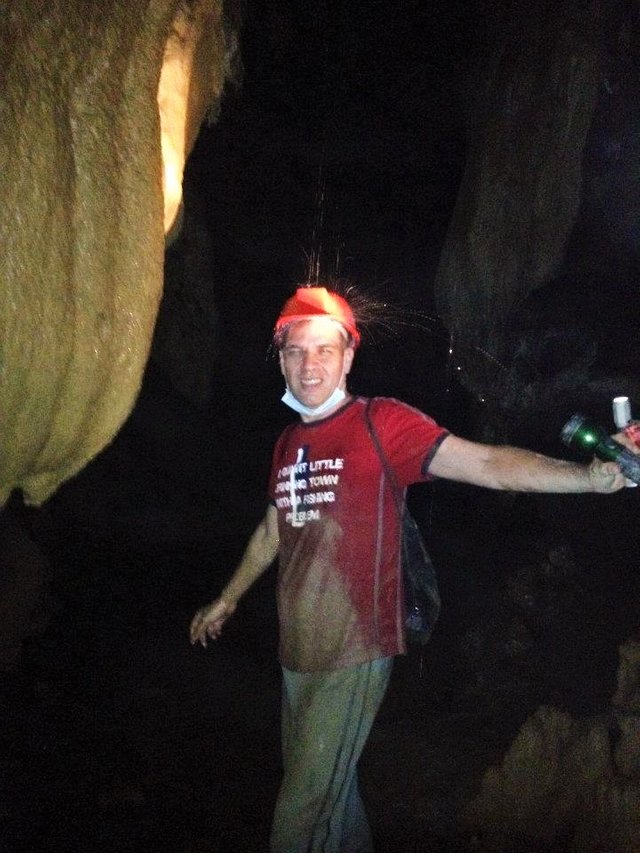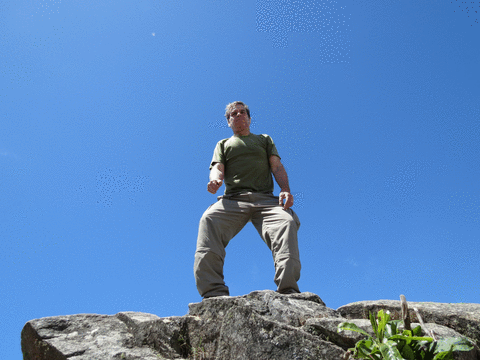Is there a relationship between the poles' motion and volcanic activity? A brief essay and some digital art

An Earth of Volcanoes. Digitalart from @yomismosoy

Hello, eSTEEMed friends, lovers of science and art... Just Venezuela's Internet is the worth around the world and economical and social are so hard day by day. However, here I am once, sharing my points of view about science and some digital art.
Finding connections
There is increasing evidence of the multiple connections and interrelations between various systems and phenomena that do not necessarily appear to be linked at first sight. From the astonishing fact that the atoms that make up our bodies had their origin in gigantic cosmic commotions that occurred almost at the very beginning of the universe, to the relationship between the phases of the moon and the tides, to the symbiosis and subtle balances that occur daily between the organisms that make up the various ecosystems of our planet, more and more scientific evidence is emerging about the relationship between processes that at first glance appear to be unconnected.
Two poles moving and a volcano threatening
A study that may eventually have implications for understanding and perhaps predicting global seismic and volcanic activity was conducted by a team of French and Italian scientists who were analyzing a set of data on the behavior over the past two decades of Mount Etna, a well-known, fairly active volcano in southern Italy. The study suggests, quite convincingly, that there is a clear relationship between the activity of Mount Etna and the periodic movements of the poles of the planet Earth, which have an impact on deformations that can reach a certain level of importance along the Earth's surface.
What was already known
Surely we have all heard about the fact that the Earth undergoes periodic transformations as a result of various phenomena and whose scale does not make them perceivable to our senses. Perhaps the best known of all is the deformation that the planet experiences as a result of the attraction of the Moon and the Sun and which we can observe through the force of the tides. Well, this interaction translates into a transformation of up to 30 centimeters per day of the earth's surface.
Another phenomenon that also leads to an almost undetectable deformation of just one millimeter of variation is the result of periodic changes in the length of the earth's day. Finally, another element that does produce a somewhat more important alteration on the planetary surface is the cyclical movement of the poles, which is in direct proportion to latitude, that is, the distance that a given point occupies in relation to parallel 0 or the Equator, and which can represent a deformation of up to one centimeter on parallel 45. This variation, which could seem irrelevant, can significantly affect seismic and volcanic processes on a global scale. That, at least, is what seems to happen with Mount Etna.
What does recent studies on Mount Etna suggest?
As we know, science advances very gradually because its methodology involves confirming the data on which the respective theories will be formulated. Walking in small steps is usually how they arrive at the astonishing conclusions of contemporary science. The multitude of factors linked to the enunciation of any theoretical body, the non-consideration of which can mean the failure of long years of work, makes scientists cautious to the point of exasperation.
This is why Sebastien Lambert of the Université PSL de Paris, France and Gianluca Sottili of the Sapienza-Università di Roma, Italy dedicated themselves to collecting and analyzing data that was produced between 2000 and 2018, that is, during 227 months. These data consist of measurements of the position of the Earth's axis of rotation, magnitudes of the earthquakes that have occurred up to a perimeter of 43 kilometers around Mount Etna, as well as figures relating to the various volcanic eruptions that have taken place in its interior. All this is intended to check whether the movement of the Earth's poles actually affects the geological processes of Mount Etna. This information is of great interest, since the volcano is located at the 37th parallel, that is, near the strip of maximum affectation as a result of the movement of the Earth's poles.
The comparison of the data related to the radius of displacement of the poles and the seismic and volcanic performance of the mount allowed scientists to affirm that there is a clear proportional relationship between both magnitudes and changes in one category imply changes in the other. As can be seen in the following graphic, the maximum peaks were reached in 2002 and 2009, respectively.

Source
From 2010 onwards there has been a clear fall. This may be linked to the abrupt changes that have been taking place in the Earth's magnetic field, without scientists knowing with certainty what the cause and consequences are for the planet.
Significant changes in the Earth's magnetic field
Recent years have seen major changes, such as an intense acceleration in a region of magnetism located in northern South America. In addition, a wide band of the magnetic field from Zimbabwe in Africa to Chile in western South America has been weakening so strongly that satellites flying over this area are at risk of being damaged by increased radiation levels. And the most significant is that the magnetic north pole, which since 1831 has been moving very gradually from the Canadian Arctic to Siberia, north of Russia, has recently increased its rhythm, reaching a displacement speed of up to 54 kilometers per year.
It is of the maximum importance for science and for the society in general to deepen the studies on these subjects whose repercussions go from a complete reversion of the polarity, which has already happened in previous periods of the terrestrial history, to a long term weakening of the whole terrestrial magnetic field, fact of great importance even for the same life, in view of the protective function of the field to avoid the mortal effects of the solar wind.
References:
Lambert S. and Sottili G. Is There an Influence of the Pole Tide on Volcanism? Insights From Mount Etna Recent Activity. Available in
Garcia de Jesus, Erin I. Forces from Earth’s spin may spark earthquakes and volcanic eruptions at Mount Etna. Available in
Debug Lies News. Researchers found a link between Earth’s rotational axis and bursts of magma near Italy’s Mount Etna. Available in

An Earth of Volcanoes. Some digital art
I created and edited this image with the free software http://firealpaca.com/. It represent a play with the lines that seismographs produce when they record seismic activity.

https://www.deepl.com/ helps me with the Translation
 | |||||||||||||
|---|---|---|---|---|---|---|---|---|---|---|---|---|---|
 @yomismosoy @yomismosoy
|
   Posted via Steemleo |




)
Congratulations @yomismosoy! You have completed the following achievement on the Steem blockchain and have been rewarded with new badge(s) :
You can view your badges on your Steem Board and compare to others on the Steem Ranking
If you no longer want to receive notifications, reply to this comment with the word
STOPTo support your work, I also upvoted your post!
Do not miss the last post from @steemitboard:
Vote for @Steemitboard as a witness to get one more award and increased upvotes!
Hi, thanks for the post! I included a link to it in my daily Science and technology digest, and you'll get a 10% share of that post's rewards.